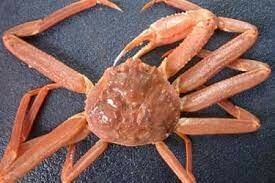Strong salmon runs point to a resurgence in harvesting jobs for 2017
Fewer men and women went out fishing in Alaska last year, in a familiar cycle that reflects the vagaries of Mother Nature.
A focus on commercial fishing in the November Alaska Economic Trends by the State Department of Labor shows that the number of boots on deck fell by five percent in 2016 to 7,860 harvesters, driven in great part by the huge shortfall in pink salmon returns and big declines in crab quotas.
Fishing for salmon, which accounts for the majority of Alaska’s fishing jobs, fell by 6.4 percent statewide in 2016, a loss of 323 workers.
The only Alaska region to show gains in fishing jobs last year was Southcentral, which includes Prince William Sound and Cook Inlet fisheries, as well as fishing boats out of Homer, Seward and Kenai. All of the region’s fisheries added jobs in 2016, even salmon, scoring the state’s second-highest total employment at 1,661 harvesters.
Southeast Alaska had the state’s largest slice of fishing jobs in 2016 at 29 percent (2,275 fishermen), but that reflects increasing declines for the third straight year. The Panhandle’s harvesting employment dipped 0.8 percent in 2015 and then 2.3 percent in 2016, a drop of 53 jobs.
Fishing jobs at Kodiak fell by 8.5 percent in 2016, erasing the job gains of the few prior years. That reflected a poor salmon season, where fishing jobs dropped 14 percent, combined with slight drops in fishing for pollock, cod and other whitefish.
Bristol Bay, where fishing jobs rely almost entirely on salmon, took the hardest hit last year. The 1,276 permits fished reflect a loss of 133 fishing jobs, or 9.5 percent.
For Alaska crabbers, fishing jobs were down by nearly 19 percent to 464 persons, a loss of 107 fishermen and the lowest level since 2009. That was due to lower crab numbers and a called off Tanner crab fishery in the Bering Sea.
The crab cuts cost the Aleutians and Pribilof Islands more than 122 fishing jobs in 2016, a 7.8 percent decline.
Looking ahead, state economics said reports of record catches and a 67 percent higher payday for Alaska salmon fishermen this year suggests a resurgence in harvesting jobs for 2017, while other catches, such as cod, appear weaker.







